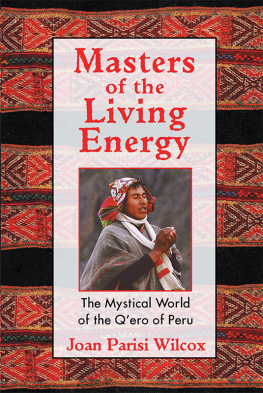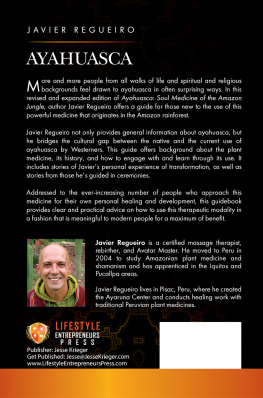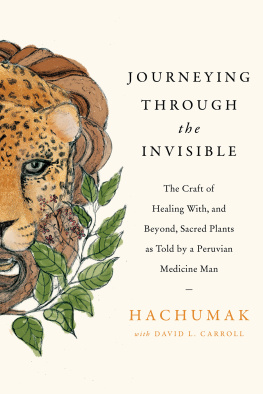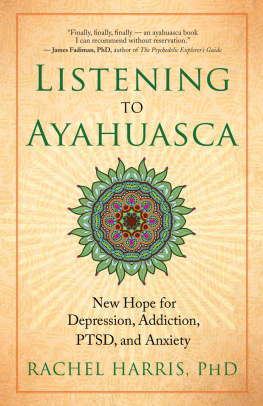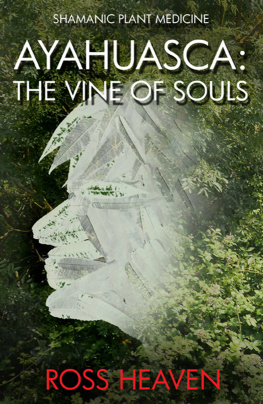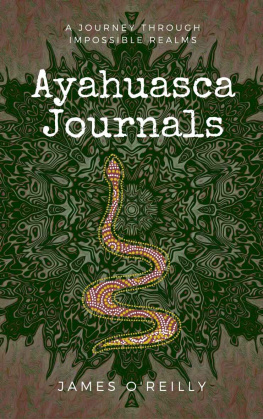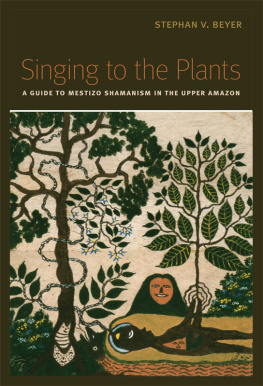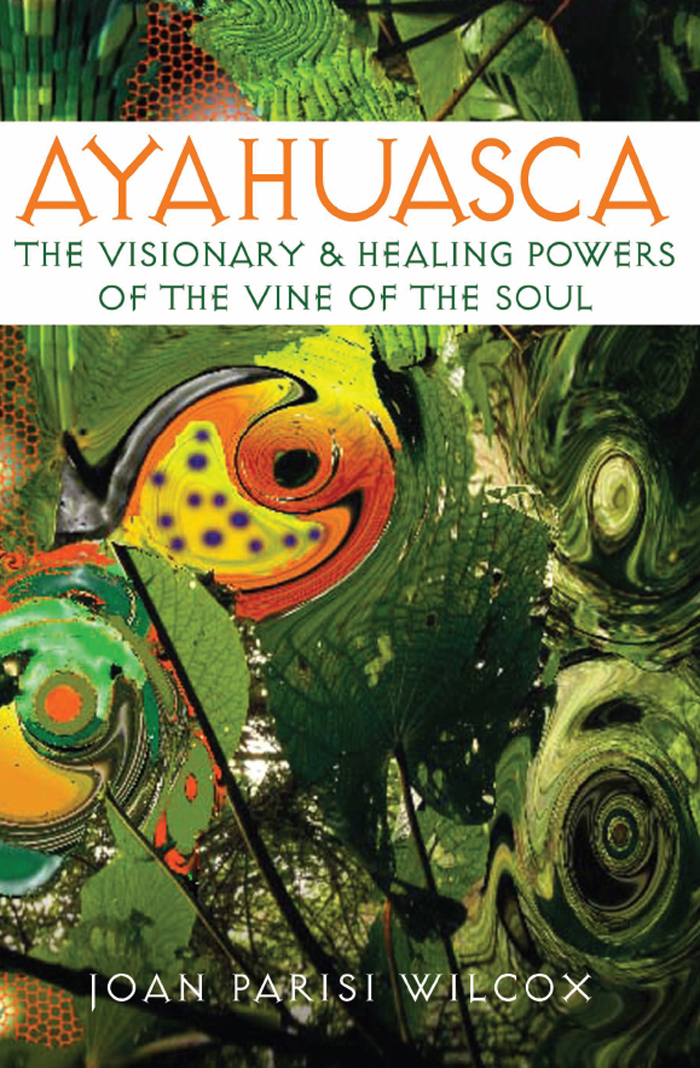AYAHUASCA
THE VISIONARY AND HEALING POWERS OF THE VINE OF THE SOUL
JOAN PARISI WILCOX

To my mother, Victoria, for her indomitable spirit;
and to my husband, John, who brings such magic to my life
Contents

Part One:
THE BEAUTIFUL STRANGENESS BEGINS

Part Two:
THE MOTHER OF THE VOICE IN THE EAR
Acknowledgments
The personal journey that I share in this book would not have been possible without the support of and inspiration provided by several people, all of whom I would like to thank publicly. Because of the nature of the subject matter, however, most of these people prefer to remain anonymous. So I will call them by the pseudonyms I use for them in the book.
To Michelle and Andrew, thank you for the sincerity of your friendship. To my husband, John, as always, thank you for loving me so well and for supporting my individual path while together we explore a joint one.
To Jack, my heartfelt appreciation for bearing with me and for providing me with bearings when I most needed them. Thank you, as well, for serving as an expert reader for large portions of this manuscript. To don Luis, thank you for guiding the journey so well and for your healing songs, which my cells and spirit now sing. To don Emilio, please accept my gratitude for your generous giving of yourself and for opening my heart so unexpectedly during one of the healing sessions. To Chico and Mateo, and to the others at camp whose names I never learned, thank you for your service.
I would like to honor psychonauts past and present who broke trail through unknown terrain and then boldly showed us the way. Their names are too numerous to list, but I would like to publicly acknowledge at least a few: Carlos Castaneda, Walter Pahnke, Huston Smith, Aldous Huxley, Albert Hofmann, Jonathan Ott, Ralph Meztner, R. Gordon Wasson, Stanislav Grof, Michael Harner, Dennis McKenna, Terence McKenna, Jeremy Narby, Luis Eduardo Luna, and Pablo Amaringo.
Finally, I would like to thank two other beings: the Mother of All Plants, ayahuasca, for reasons only she knows; and the Amazon jungle, for all of its green gifts to humanity.
Authors Note
Readers should be aware that it is illegal in the United States and many other countries to ingest or in some cases even to possess ayahuasca, the psychedelic Amazonian tea that is the subject of this book. My writing about ayahuasca, and my personal experiences with it, are not endorsements for the unsupervised or recreational use of it or any other consciousness-altering substance. Although research has suggested that ayahuasca is biologically safe, especially if one follows traditional dietary restrictions, it can cause psychological and even physical harm if not used properly and with spiritual sobriety. I have experienced ayahuasca only in its sacramental and ceremonial context, under the guidance of a trained Peruvian ayahuasquero. I consider my work with ayahuasca to be part of my continuing training in the spiritual arts of Peru and of my personal spiritual journey.
It has only been recently, in the past two decades, that the U.S. government has allowed researchers to once again begin clinical studies with psychedelics such as DMT (dimethyltryptamine) and MDMA, more commonly known as Ecstasy. Indiscriminate and uninformed use of these substances by individuals interested in exploring states of consciousness could jeopardize this opportunity for our society to open a considered, mature debate about the beneficial uses of consciousness-altering substances and to overcome the media-induced myths about their perceived dangers. I urge young psychonauts, whose presence is most evident on the plethora of Internet sites dealing with ayahuasca and other psychoactives, to not repeat the mistakes of their compatriots from the sixties and seventies whose abuse of such substances contributed to the governments decision to criminalize them.
It is my hope that vicariously sharing my experiences with ayahuascafrom the most terrifying to the most sublimewill allow readers to develop respect for the sacramental use of this powerful plant teacher in the context of its ancient tradition. Ayahuasca has been in use in the Amazonian regions of South America for thousands of years. Ayahuasqueros passed on, from generation to generation, fairly uniform ways of using this and other plant teachers. There are reasons for the diet retreat, for the darkened conditions, for the sacred songsfor almost every aspect of an ayahuasca ceremony. I believe that we have nothing new to invent or discover about how to use ayahuasca in the most beneficial ways. Both individual psychonauts and medical researchers cast off what they may view as the ritual trappings of the ayahuasca ceremony to their own detriment.
Actually, the legal status of ayahuasca use in the United States is hard to pin down. DMT (dimethyltryptamine), a component of ayahuasca tea, is a Schedule 1 substance and hence illegal, but the status of the ayahuasca liana is somewhat murky. Since the ayahuasca vine (Banisteriopsis caapi) doesnt contain DMT, it is not illegal. But because the tea is brewed with chacruna or other DMT-containing plants, it is illegal. Of late the Federal Drug Administration has been cracking down on shipments of ayahuasca vine, often imported as an herb into the United States, and there are legal challenges here and abroad that should soon define the situation more clearly. As someone speaking and writing publicly about this visionary plant, I choose to take a conservative stance in this issue as a matter of propriety.
Hereafter I use the term psychonauts to describe people who are serious explorers of the realms of consciousness through the use of psychoactives.
INTRODUCTION
Exploring Ayahuasca
I was the world in which I walked, and what I saw / Or heard or felt came not from but myself; / And there I found myself more truly and more strange. These lines from Wallace Stevenss Tea at the Palaz of Hoon speak to what I feel as I attempt to write about ayahuasca, the consciousness-altering plant brew of the South American Amazon. Through partaking of ayahuasca, I did indeed find myself more truly than ever before and yet more strange than I anticipated. So when trying to explain to people what my experiences with ayahuasca were like, I become strangely inarticulate for one who is a writer and editor. At such times I feel tempted to quote Wallace Stevens. For me, many of his lines and stanzas strike to the bone of the ayahuasca experience. Stevens was writing about aesthetics and poetry, language and meaningsubjects that are not entirely foreign to the ayahuasca experience. Is there any area of inquiry foreign to the ayahuasca experience? I doubt it. Ayahuasca is not only an experience of body, mind, and spirit but also one of meaning, both epistemological and ontological. It is an experience that transcends its botany and pharmacology, its medicinal and curative tradition, and its Amazonian roots.
Ayahuasca expertly debones the mind, perhaps even the spirit, and certainly consensual reality and the contexts of meaning. This bitter jungle brew can saw through the gristle and tendons that hold the meat of who we areor who we think we areto the bone of body. It frees us in ways inexplicable to those who have not experienced it. This millennia-old sacrament can expose the marrow of our delusions and our desires, sucking out the stem cells of the I for infusion into a more cosmic Self. It can wickedly trim the fat of our sureties and fillet our beliefs, plopping them matter-of-factly under the see-through wrapping of the Styrofoam tray of our cultural traditions.


